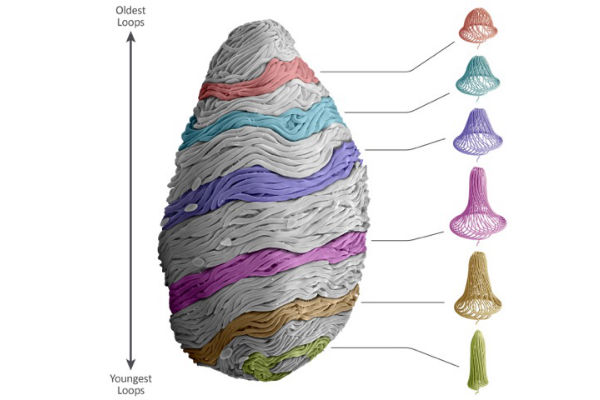SCIENCEALERT STAFF 23 SEP 2014

Image: Douglas Fudge
When threatened, marine hagfish produce strands of slime made from what scientists think is some kind of sugary substance. No one’s been able to prove what the slime’s actual function is, but it could make the hagfish’s body too slippery for a predator to do much with, or perhaps it clogs the predator’s gills up so it can’t attack. Either way, this slime is pretty incredible, especially when you’re peering all the way down into its microscopic structure.
Hagfish slime has the tensile strength - the amount of stress it can withstand before breaking - and lightness of spider silk, and is five times stronger than steel. It's made up of threads that are just 12-nanometres-wide, but stretch to a length of 15 centimetres, and a team of scientists from the University of Guelph in Canada have figured out how these super-long and thin threads don't get tangled up inside the slime glands of the hagfish. It turns out they're wrapped up so tightly, they can fit inside a SINGLE CELL.
This cell is known as a gland thread cell (GTC), and the team from Guelph investigated how GTCs mature using a technique known as Focused Ion Beam Scanning Electron Microscopy. "The thread is coiled up in a conical “skein” in 15-20 layers," says Neomatica. "As a GTC matures, its nucleus migrates to an extreme pole, leaving most of the cell volume packed with a single coil of thread."
This conical coil of slime thread appears to be controlled by the GTC’s nucleus, the researchers report, and as the GTCs grow old, the nucleus morphs from a round to a more elongated shape. So the first layer of slime coils inside these cells will be round, and then gradually the following layers will become more elongated (see graphic above). This keeps the threads organised and restricts their movement inside the cells so they don’t tangle themselves up.
The team published the results in the journal Nature Communications.
And here's what the hagfish's slime looks like:
No comments:
Post a Comment